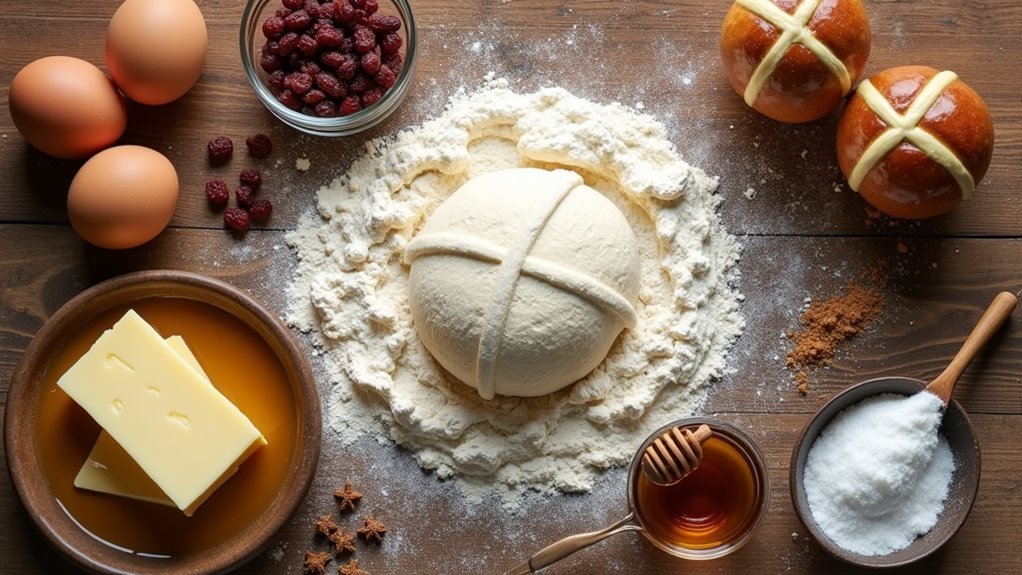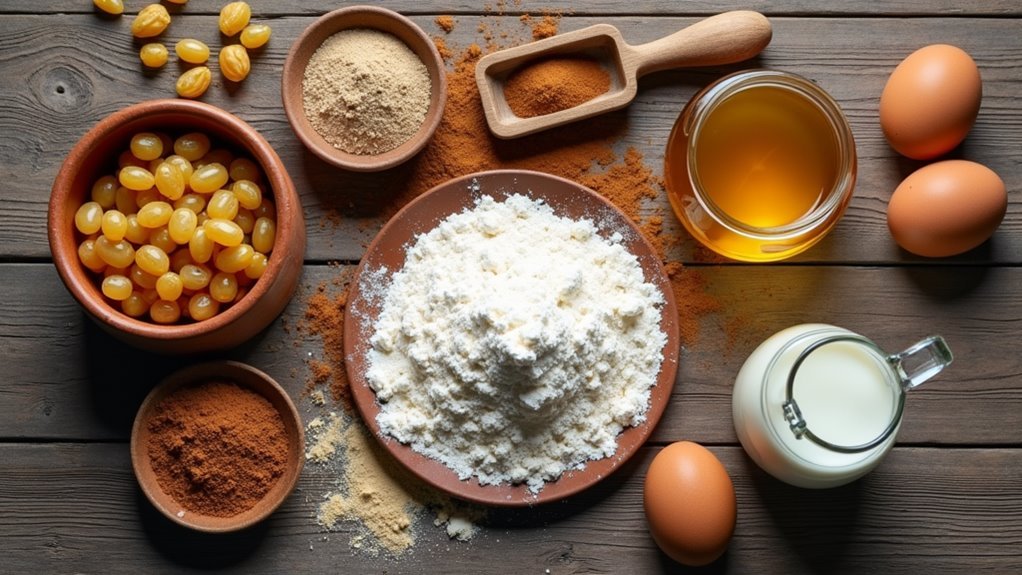Get ready to jazz up your weekend with some seriously tempting hot cross buns! These little beauties aren’t just for the holiday crowd; they’re perfect for a cozy night in when you want to whip up something that makes your kitchen smell like heaven. Picture this: soft, pillowy buns bursting with flavor, ready to be devoured with your favorite person. We’re talking spices that tingle your taste buds and a glaze that brings a touch of sweetness to an already delightful experience. No need to stress – I promise, these buns are easier to make than you think! So, roll up your sleeves, because your oven is about to become your new best friend. Let’s dive into this delicious adventure together!
Recipe

If you’re ready to take your baking skills to the next level, you’ve come to the right place Crafting the perfect hot cross buns combines traditional methods with modern twists, creating a flavorful symphony. Start by proofing the yeast with warm milk and a hint of sugar, letting it work its magic until foamy. Mix flour, cinnamon, and nutmeg, those classic spices, ensuring a comforting warmth. Form a soft dough with eggs and butter, kneading until smooth. Conceal plump, soaked dried fruits within each bun—it’s like a treasure, minus the map Hot cross buns are sweet rolls, lightly spiced with cinnamon and nutmeg, and studded with tangy craisins or raisins.
Glaze your buns with a creamy egg wash, guiding them to a golden finish. Consider adding citrus zest for a bright, unexpected twist. This technique is similar to achieving a golden-brown crust in desserts like peach cobbler, which also relies on careful baking. Enjoy these warm delights, perfect with butter or jam
Background
Hot Cross Buns are more than just a delicious treat—they’re a flavorful tradition with deep roots in history. Originating from a Saxon celebration, these sweet, spiced buns later became a staple of Easter festivities, especially on Good Friday. The cross on top, a simple yet profound symbol, represents the crucifixion of Christ and serves as a reminder of the spiritual significance behind the feast. Traditionally made with fragrant spices like cinnamon and nutmeg, along with plump raisins or currants, these buns were also imbued with superstitions, believed to protect homes from fire and bring good fortune. The use of fresh ingredients, especially leavening agents like active dry yeast, is crucial for ensuring the buns rise perfectly and achieve the desired texture. While they were once banned outside of specific religious occasions by royal decree, today, Hot Cross Buns are a cherished part of Easter celebrations in many parts of the world, bridging the gap between historical customs and modern-day culinary enjoyment. They can be paired perfectly with a side of Crispy Air Fryer Frozen Tater Tots for a well-rounded Easter meal.

Hot Cross Buns are a beloved traditional treat, typically enjoyed during Easter. These sweet and spiced buns are distinguished by their signature cross, made from a simple flour and water paste, adorning the top of each bun. The dough, rich with warm spices such as cinnamon and nutmeg, incorporates plump raisins or currants for bursts of fruity flavor. With a buttery, tender crumb, these buns are a delightful addition to any meal or afternoon tea. Emphasizing quality ingredients, like whole milk and unsalted butter, guarantees a flavorful and moist bun that will impress anyone lucky enough to taste one. The traditional version uses a paste of water and flour for the crosses, rather than the icing that is often seen in modern adaptations.
Crafting these buns involves a few key steps, beginning with the preparation of the yeast mixture. Combine warm milk, sugar, and active dry yeast in a bowl, and let it sit until the yeast becomes foamy and doubled in size. This step is indispensable for guaranteeing a good rise. The yeast mixture is then combined with softened butter, eggs, and all-purpose flour to form a dough. After a thorough kneading until the dough is smooth and elastic, it’s time for the first rise. Ensuring proper kneading helps develop the gluten in the dough, much like how lentil and spinach soup benefits from careful cooking to achieve the perfect texture.
Once the dough has doubled in size, divide it into equal portions, shape into buns, and allow for a second rise. Brush each bun with an egg wash for a beautiful golden crust and add the iconic cross before baking. Once baked and cooled, a simple glaze of powdered sugar and milk adds a touch of sweetness.
When making Hot Cross Buns, consider using a stand mixer with a dough hook attachment to simplify the kneading process. Be mindful of the dough’s rising environment; a warm, draft-free space will encourage efficient yeast activity. If the dough feels sticky, a little extra flour can help, but avoid over-flouring to maintain the bun’s soft texture. Additionally, the incorporation of spices is flexible to your taste—adjust quantities to enhance flavors to your liking. For convenience, the buns can be prepared in advance and stored in the refrigerator for a few days or frozen for up to a month, maintaining their taste and texture for whenever you choose to enjoy them.
Final Thoughts
As anyone can tell you, there’s something truly special about pulling a batch of warm, fragrant hot cross buns from the oven. They carry a sense of cultural relevance, connecting us to ancient traditions and modern appeal. From the Saxon rituals honoring spring to the innovative varieties we enjoy today, hot cross buns unite us through history and flavor.
Back in 1592, a decree in England forbade the sale of spiced buns except at burials, Good Friday, or Christmas, ensuring these treats maintained their solemn significance. This historical context is reminiscent of how gingerbread cookies were also tied to specific occasions and traditions.
Here’s a quick look at their evolution:
| Time Period | Cultural Aspect | Modern Twist |
|---|---|---|
| Ancient Origins | Ritualistic Symbolism | Seasonal Availability |
| Christian Tradition | Spiritual Significance | Innovative Recipes |
| Historical England | Protective Powers | Diverse Global Variations |
These buns, once limited to specific occasions, now enjoy a timeless presence. They encapsulate history while adapting to contemporary tastes, making every bite a shared journey through time.

